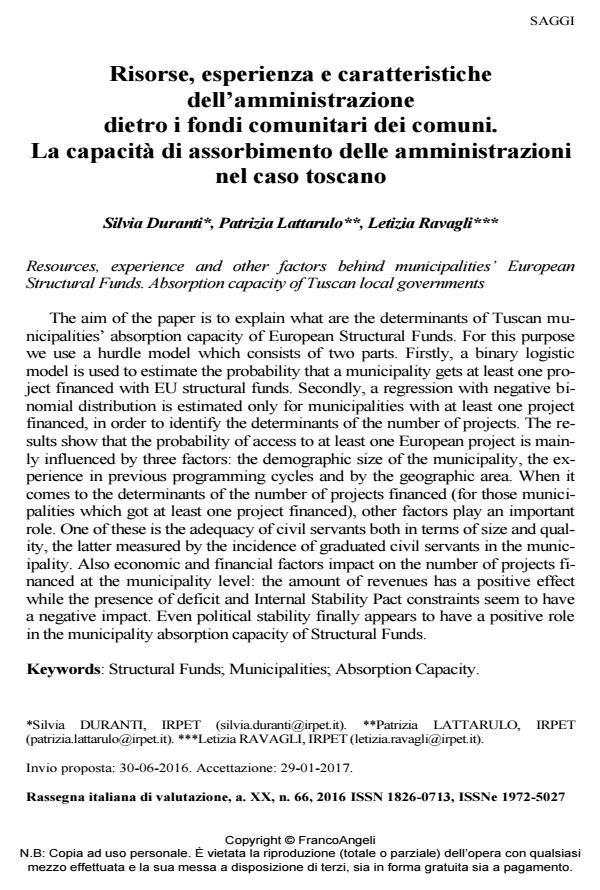Risorse, esperienza e caratteristiche dell’amministrazione dietro i fondi comunitari dei comuni. La capacità di assorbimento delle amministrazioni nel caso toscano
Titolo Rivista RIV Rassegna Italiana di Valutazione
Autori/Curatori Silvia Duranti, Patrizia Lattarulo, Letizia Ravagli
Anno di pubblicazione 2017 Fascicolo 2016/66
Lingua Italiano Numero pagine 19 P. 139-157 Dimensione file 554 KB
DOI 10.3280/RIV2016-066009
Il DOI è il codice a barre della proprietà intellettuale: per saperne di più
clicca qui
Qui sotto puoi vedere in anteprima la prima pagina di questo articolo.
Se questo articolo ti interessa, lo puoi acquistare (e scaricare in formato pdf) seguendo le facili indicazioni per acquistare il download credit. Acquista Download Credits per scaricare questo Articolo in formato PDF

FrancoAngeli è membro della Publishers International Linking Association, Inc (PILA)associazione indipendente e non profit per facilitare (attraverso i servizi tecnologici implementati da CrossRef.org) l’accesso degli studiosi ai contenuti digitali nelle pubblicazioni professionali e scientifiche
The aim of the paper is to explain what are the determinants of Tuscan municipalities’ absorption capacity of European Structural Funds. For this purpose we use a hurdle model which consists of two parts. Firstly, a binary logistic model is used to estimate the probability that a municipality gets at least one project financed with EU structural funds. Secondly, a regression with negative binomial distribution is estimated only for municipalities with at least one project financed, in order to identify the determinants of the number of projects. The results show that the probability of access to at least one European project is mainly influenced by three factors: the demographic size of the municipality, the experience in previous programming cycles and by the geographic area. When it comes to the determinants of the number of projects financed (for those municipalities which got at least one project financed), other factors play an important role. One of these is the adequacy of civil servants both in terms of size and quality, the latter measured by the incidence of graduated civil servants in the municipality. Also economic and financial factors impact on the number of projects financed at the municipality level: the amount of revenues has a positive effect while the presence of deficit and Internal Stability Pact constraints seem to have a negative impact. Even political stability finally appears to have a positive role in the municipality absorption capacity of Structural Funds.
Parole chiave:Structural Funds; Municipalities; Absorption Capacity.
Silvia Duranti, Patrizia Lattarulo, Letizia Ravagli, Risorse, esperienza e caratteristiche dell’amministrazione dietro i fondi comunitari dei comuni. La capacità di assorbimento delle amministrazioni nel caso toscano in "RIV Rassegna Italiana di Valutazione" 66/2016, pp 139-157, DOI: 10.3280/RIV2016-066009